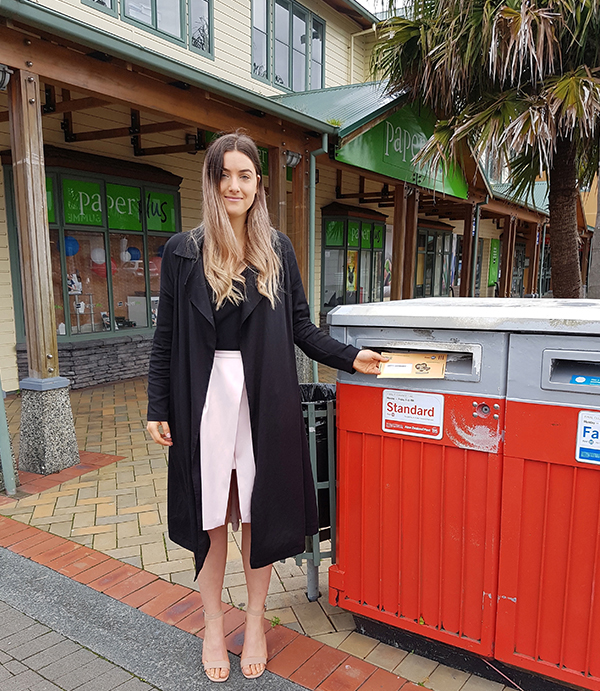Heart-shaped ballot boxes and Kombi combo fails to fire

Last of the Postal Ballots: When postal voting was introduced, it briefly helped arrest the steady decline in voter turnout—as will online voting, when Aotearoa eventually catches up with Estonia and other states that found the sky didn’t fall following its introduction. Meanwhile, just why Auckland Council thought heart-shaped ballot boxes would have citizens stampeding to polling places, when the nearest, perfectly serviceable, post box will suffice, has yet to be explained. image Caitlin Owston-Doyle
Tessa Berger is quoted, but not by name. In his New Zealand Herald column Political Roundup, Dr Bryce Edwards names neither Tessa, nor the national Kids Voting programme she champions.
Dr Edwards suggests local government is headed towards an existential crisis, but the University of Ōtago lecturer in politics, in a 2212‑word article, fails to make one mention of the one evidence‑based intervention that does work, and is readily available—Kids Voting. Small wonder councils themselves are floundering.
Disdaining the evidence‑based approach, Auckland Council decided that heart-shaped ballot boxes and a repurposed Volkswagen Kombi would stem the inexorable decline in voter turnout. Instead, the council should have been helping with the blanket implementation of the programme its predecessor Auckland City Council pioneered, at least in Aotearoa, 25 years ago. The low number of ballots returned to date suggests that the council’s undisciplined approach has failed, and while the turnout might not be quite the region’s lowest—35% in 2013—nor will it be an appreciable improvement.
Because while other measures, such as lowering the voting age to 16 and online voting, would help, it is voting in schools that has proved to make the difference. But rather than the about 8% experiencing it at present, all year-7-and-onwards students need to be participating in such a programme. If that sounds extreme, it is not, as Dr Edwards suggests, the existence of local government that is at risk, but local democracy, which is already decided by a minority of one in three, mostly white older people.
The reason, of course, that the likes of Kids Voting works, is that humans, like all animals, learn by doing. And the younger the animal, the more voracious the learning. That is why the World’s most expensive Kombi paint job and ballot boxes are wasted. At least the Kombi had the theoretical potential for creating a slight incentive, whereas the ballot boxes rewarded, or annoyed the byjesus out of, voters only after they had already voted.
Although it is key, Kids Voting must be complemented by a raft of overdue reforms, as listed below.
Tessa Berger was quoted in Dr Edwards’ column, as saying that her age was her ‘best asset’, and that:
Young people feel disengaged because they aren’t being best represented. The way we have branded local body politics, quite simply doesn’t appeal to a younger demographic.
Youth is attracted to youth, and given the urgency of salvaging democracy before extreme climate events further fuel the instinct for regimes to become increasingly autocratic, fielding more youthful candidates is a strategic necessity, not simply a question of fair representation.
An under-review paper published Tuesday, by a team of 12 of the World’s leading climate scientists led by the legendary Dr James Hansen, concludes:
…if large fossil fuel emissions are allowed to continue, the scale and cost of industrial CO2 extraction, occurring in conjunction with a deteriorating climate with growing economic effects, may become unmanageable. Simply put, the burden placed on young people and future generations may become too heavy to bear.
If it wasn’t already obvious, Young People’s Burden: Requirement of Negative CO2 Emissions rigorously spells out exactly why it is the right of young people to be participating in determining, with all deliberate speed, the actions taken on climate.
Vote for the future!until midday Saturday
